News
-
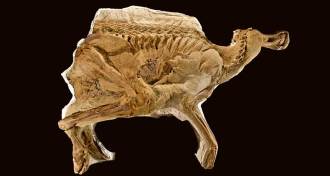 Paleontology
PaleontologyParasites wormed way into dino’s gut
Tiny slimed tunnels in the guts of a 77-million-year-old duck-billed dinosaur fossil offer the first hard evidence that dinosaurs may have been infected by parasitic worms, paleontologists say.
By Meghan Rosen -
 Health & Medicine
Health & MedicineTight spaces cause spreading cancer cells to divide improperly
Researchers are using rolled-up transparent nanomembranes to mimic tiny blood vessels and study how cancer cells divide in these tight spaces.
-
 Quantum Physics
Quantum PhysicsQuantum fragility may help birds navigate
Birds’ internal compasses may rely on the delicate nature of the quantum world.
-
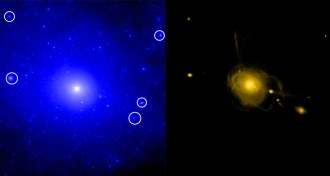 Astronomy
AstronomyPossible perp found in mystery of Milky Way’s missing galaxy pals
Billions of years of supernovas could explain why galaxies like the Milky Way have so few tiny companions and why those companions have so little mass.
-
 Life
LifeCities create accidental experiments in plant, animal evolution
To look for evolution in human-scale time, pick a city and watch a lizard. Or some clover.
By Susan Milius -
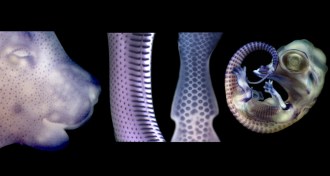 Animals
AnimalsReptile scales share evolutionary origin with hair, feathers
Hair, scales and feathers arose from same ancestral appendage.
-
 Psychology
PsychologyMoral dilemma could put brakes on driverless cars
Driverless cars race into a moral conflict over saving passengers or pedestrians.
By Bruce Bower -
 Life
LifeScientists find clue to why mitochondrial DNA comes only from mom
Scientists have identified a protein that chops up the mitochondrial DNA in a dad’s sperm after it fertilizes an egg. The finding helps explain why mitochondrial DNA is usually passed on only by mothers.
-
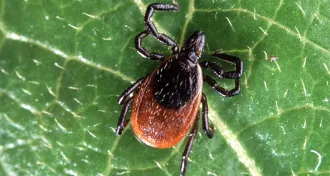 Life
LifeNew species of bacteria found to cause Lyme disease
Camping? Don’t forget the bug spray. Lyme disease covers new ground.
By Laura Beil -
 Life
LifeFido and Fluffy could unleash drug-resistant microbes
After discovering resistant microbes in pets, scientists worry about the role of companion animals in the spread of resistant urinary infections.
By Laura Beil -
 Science & Society
Science & SocietyTough gun laws in Australia eliminate mass shootings
Following the 1996 implementation of strict gun control laws in Australia, the country has not experienced any mass shootings.
By Meghan Rosen -
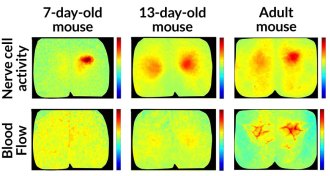 Neuroscience
NeuroscienceNewborn brain has to learn how to feed itself
Nerve cells in newborn mice can’t yet feed themselves.